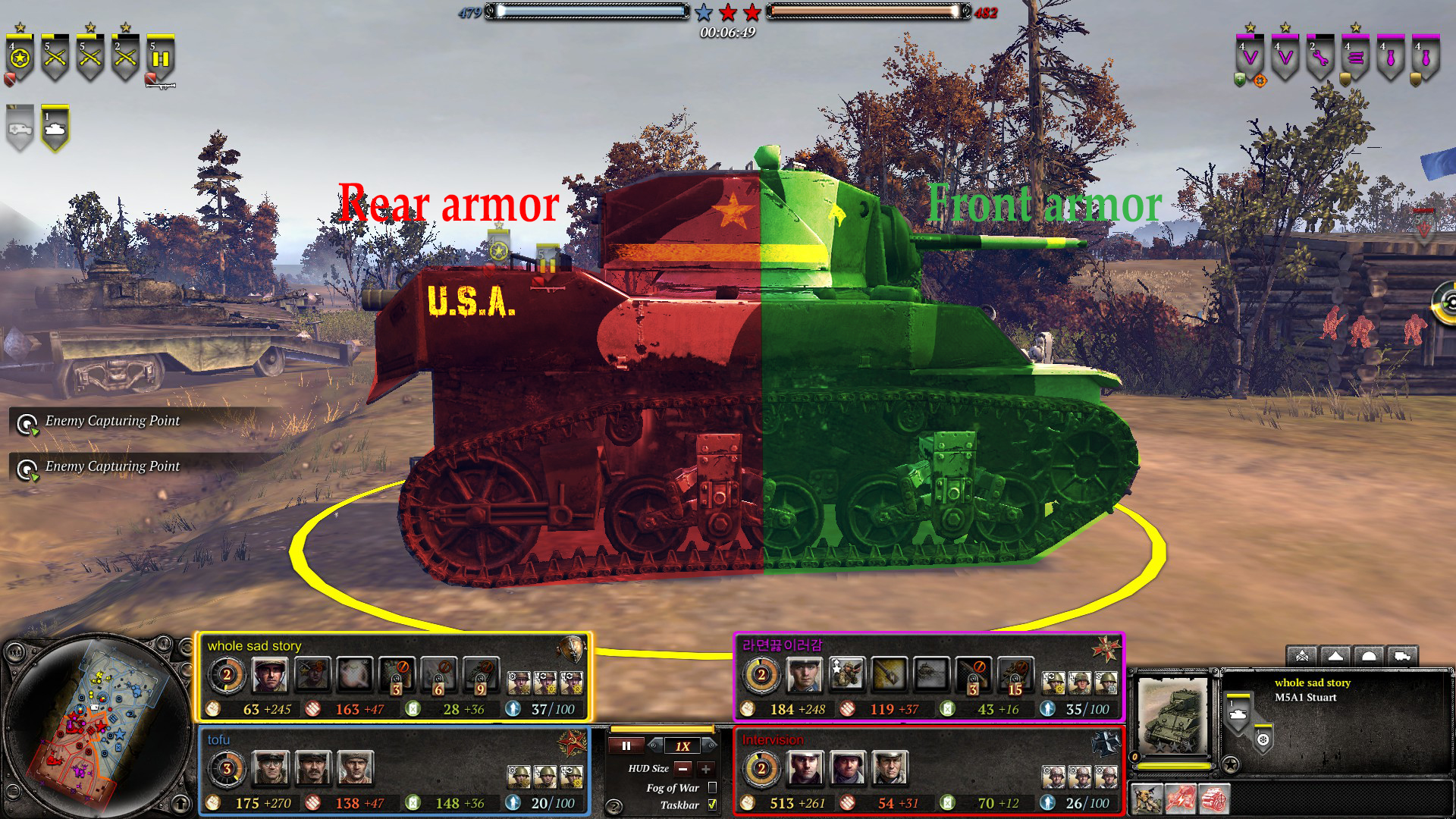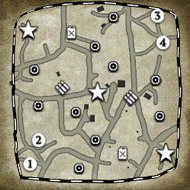Arent there a lot of times when a projectile passes thru a vehicle and hits the ground behind it? So you end up with an AOE rear armor even shooting from the front?
Quirky as CoH2 is, I think this happens from time to time. Or at least sometimes the shot just seems to miss the hitbox and hits the ground below the tank.
AoE penetration is yet not implemented, neither is deflection damage. At least for the showcased scenario of medium vs medium, they are very rare events or do not happen at all, respectively.
Another issue is then that it is unclear how AoE hits are calculated. Do they just take the shortest route to the target (and here to the target hull or center?) or do they check for multiple points. For example, if a shot lands next to a vehicle's front part, is AoE calculated only against the frontal armor (shortest path) or also against a potential rear armor where it might penetrate? Since it is AoE, the latter would be logic, but it is also harder to implement. And maybe they did not do it that way, we don't know.
wow, that's some really great work right here, congrats!
with regards to the scatter model i'm actually doing some in-game testing atm using modded weapon profiles, similar to what you proposed (reducing either scatter angle or distance to zero and vice versa). in addition, setting the aoe damage profile to fall of linearly from, say, 10 at 0 m to 0 at 10 m provides a handy tool to measure in-game distances between point of impact and a target by simply monitoring the damage numbers via cheat mod.
using this i can say now at least that for horizontal scatter the probability distribution seems to be flat, i.e. a shot is equally likely to land anywhere between dead center and the max scatter distance. i'll do some testing for angular scatter tomorrow and see if the same applies here, too.
Thank you very much!
Vipper has written a small mod that I still need to find and test for the angle scatter. I'd recommend using one of the range maps for quick testing, although your method seems to be more precise.

















 cblanco ★
cblanco ★  보드카 중대
보드카 중대  VonManteuffel
VonManteuffel  Heartless Jäger
Heartless Jäger 